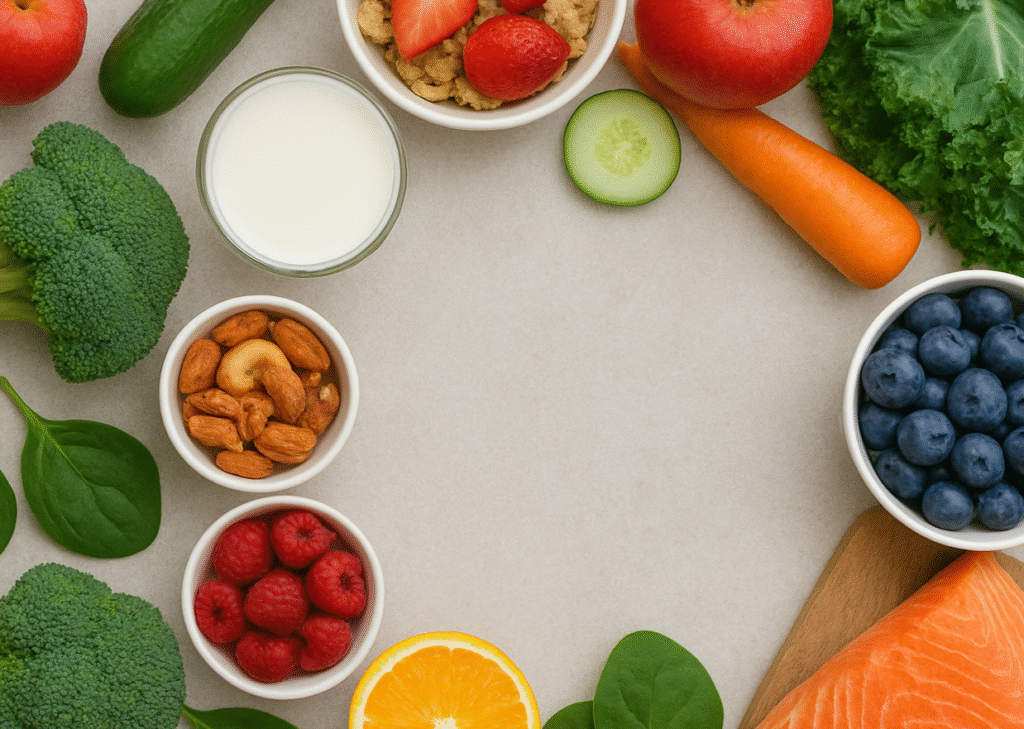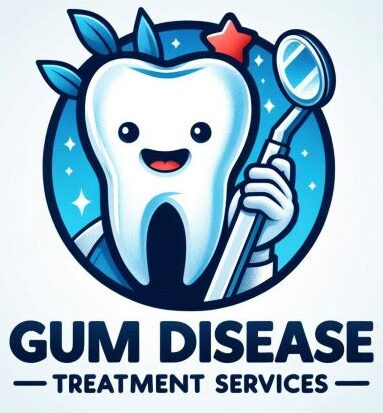
Most individuals naturally think of brushing and flossing when they want to keep their gums healthy. Although these practices are important, your nutrition is another important but frequently disregarded issue. Your everyday diet has a big impact on your gum health in addition to your waist size.
While some foods can speed up the progression of gum disease and cause inflammation, others can help protect your gums, battle bacteria, and even repair damage. So it’s time for you to gaze more closely at your plate if you intend to naturally preserve that smile.
Let’s examine how gum health is impacted by nutrition and which foods should be regularly found in your shopping cart.
Leafy Greens: The Green Defenders of Your Gum health
Your parents were right when they advised you when you were a child to eat more vegetables. Gum tissue benefits from the vitamins and minerals found in leafy greens, including spinach, kale, and Swiss chard.
Vitamin C, found in leafy greens, lowers inflammation and fortifies the blood vessels in your gums. Additionally, they include calcium and folic acid, which are essential for tooth health and tissue healing.
Healthful Tip:
Try adding a handful of spinach to your morning smoothie, or enjoy a kale salad drizzled with olive oil for a gum-friendly meal that also supports heart health.
Fatty Fish: Nature’s Anti-Inflammatory Superfood
In addition to their well-known heart-protective benefits, omega-3 fatty acids are essential for lowering gum inflammation. Omega-3 fatty acids, which are abundant in salmon, mackerel, sardines, and tuna, may help reduce the incidence of periodontal disease. In patients with periodontitis, omega-3 fatty acids have been demonstrated to reduce pocket depth and gum bleeding. The anti-inflammatory qualities are also helpful in lessening gum irritation and swelling.
Healthful Tip:
Include fatty fish in your diet at least twice a week. Grill, bake, or steam it instead of frying to retain the healthy fats.
Crunchy Vegetables and Fruits: The Dental Brushes of Nature
Gums adore meals that help your teeth function. When you chew on crunchy foods like apples, carrots, celery, and cucumbers, your teeth and gums are naturally cleaned. Saliva production is increased by these fiber foods, which removes food particles and balances out dangerous acids that can damage enamel and irritate gum tissue. Vitamin C and antioxidants found in carrots and apples contribute to gum tissue healing and prevention of infections.
Healthful Tip:
Keep sliced veggies or apples as quick snacks. Not only are they refreshing, but they’ll also give your gums a mini workout.
Consuming Moderate Citrus Fruits Can Increase Vitamin C
Due to their high vitamin C concentration, citrus fruits such as oranges, grapefruits, and kiwis are excellent for gum health. Collagen synthesis and gum tissue repair are dependent on this vitamin. The early stage of gum disease, gingivitis, can be avoided with the help of vitamin C, which fortifies the connective tissue layer in your gums.
Although citrus is good for you, excessive acid can damage your teeth. After consuming citrus fruits, always rinse your mouth with water to balance the acidity.
Healthful Tip:
Mix slices of kiwi and orange into a salad for a refreshing vitamin-packed dish.
Green Tea: The Calming Drink for Gums
If you usually drink coffee, think about switching to green tea once a day. It contains a lot of catechins, an antioxidant that reduces inflammation and eliminates dangerous oral germs. Regular green tea drinkers have been found to have healthier gums and less bleeding. Green tea’s antioxidants can even stop the bacteria that cause periodontal disease from adhering to your teeth.
Healthful Tip:
Enjoy a warm cup of green tea after meals to support gum health and freshen your breath naturally.
Dairy Products: the Impact of Calcium
Dairy items, like milk and cheese, are excellent providers of calcium, which is essential for good dental health. While casein, which comes from a milk protein, aids in neutralizing oral acids, calcium fortifies the bone in your mouth that supports your teeth. Probiotics, which may regulate your mouth’s microbes and control harmful bacteria, are also found in yogurt.
Healthful Tip:
Choose low-sugar or plain yogurt to avoid added sugars, which can harm your gums.
Seeds and Nuts: Miniature but Powerful Warriors
Rich in nutrients, almonds, walnuts, chia seeds, and flaxseeds are not only simply nutritious snacks; they support healthy gums. These foods lower inflammation while supporting gum repair because they provide omega-3 fatty acids, zinc, magnesium, and calcium.
Healthful Tip:
Sprinkle nuts and seeds on salads, yogurt, or oatmeal for an easy nutrient boost.
Garlic and Onions: The Underrated Heroes Versus Bacteria
Although your breath may not welcome it, your gums will! Garlic and onions have strong antibacterial qualities that fight off the bad germs that contribute to gum disease. Allicin, which is a naturally occurring substance found in garlic, is effective against oral infections. Conversely, the sulfuric acids found in onions aid in the elimination of germs associated with gum disease.
Healthful Tip:
Add fresh garlic or onion to soups, salads, or stir-fry dishes. For the breath issue? Follow up with some fresh parsley!
Water: The Easiest Gum Protection Method
Simple habits like drinking enough water might sometimes be adequate to sustain good gum health. Acids, germs, and residual food particles can be rinsed away by drinking lots of water. Additionally, it increases salivary flow, which naturally protects your mouth from gum disease.
Healthful Tip:
Make a habit of sipping water after every meal. If your tap water contains fluoride, you’ll get an added layer of protection for your teeth.
Whole Grains: Internally Lowering Inflammation
Your gum health may noticeably improve if you move away from refined grains and toward healthy grains like oats, quinoa, brown rice, and whole wheat.
Because whole grains have a reduced glycemic index, they don’t raise blood sugar levels, which can lead to inflammation, including gum inflammation. Additionally, these foods are rich in iron and B vitamins, which support healthy, oxygenated gums.
Healthful Tip:
Replace white bread and pasta with whole-grain alternatives. Your gums (and your overall health) will thank you for it.
Berries: Delightful yet Effective Guardians
In addition to being delicious, cranberries, blueberries, and strawberries are rich in antioxidants and polyphenols that may protect your gums from dangerous bacteria. For example, cranberries reduce plaque accumulation and the likelihood of gum irritation by stopping bacteria from adhering to your teeth and gums. Specifically, cranberries inhibit bacteria from adhering to your gums and teeth, which lowers the risk of gum disease and plaque accumulation.
Healthful Tip:
Add fresh or frozen berries to smoothies, yogurt, or oatmeal for a tasty, gum-boosting treat.
Steer clear of these foods that are harmful to gums
Knowing what foods to eat to improve gum health is important, but it’s also important to know which foods can gradually undo all of your hard work for healthy gums. Some substances do more than just damage your teeth; they foster the ideal conditions for the growth of germs, plaque, and inflammation. These foods have the potential to cause gum irritation, enamel deterioration, and potentially the onset of gum disease.
Food for Nasty Bacteria
It should come as expected that sugar is at the top. You are nourishing the germs that cause gum disease each time you consume soda, energy drinks, or candies. These bacteria feed on sugar and turn it into acid, which damages your gums and erodes your enamel.
What makes it harmful to your gums:
- Gum inflammation, or gingivitis, is caused by sugar’s promotion of plaque accumulation.
- It is more difficult for your oral cavity to maintain a good pH balance when you consume sugar frequently.
- Because they include acid, which erodes enamel and feeds bacteria, sugary beverages like soda and sweet tea are doubly dangerous.
Refined Carbohydrates: Hidden Sugars in Disguise
Even though white bread, pastries, chips, and crackers may not taste sweet, your body quickly converts them to simple sugars. These refined carbohydrates have the ability to adhere to the surfaces of teeth and nourish the germs that cause plaque to buildup.
What makes it harmful to your gums:
- Particularly along the gum line, refined carbohydrates leave behind a sticky aftertaste.
- They raise blood sugar levels, which can lead to inflammatory processes, a major contributing factor to gum disease.
- Regularly eating refined carbohydrates as a snack causes your mouth to become acidic, which erodes your gums and teeth.
The Crafty Gum Instigators
Not all food that is sticky is made equally. Even while chewy candies and dried fruits might appear innocuous, they have a tendency to stick to the surfaces of your gums and teeth. Gum irritation and acid production result from the bacteria’s extended ability to thrive due to this stickiness.
Why it’s bad for your gums:
- Even with brushing, it might be difficult to get sticky foods off of teeth and gaps.
- The longer they stay, the more acid they produce, which exacerbates gum rot and pain.
- Certain dried fruits, such as figs and raisins, contain concentrated natural sugars that, if improperly cleaned, can be just as dangerous as sweets.
Alcohol and Excessive Coffee
A Dry mouth, which lowers saliva production, is a common adverse effect of both coffee and alcohol. Because saliva helps wash away food particles, balance acids, and protect gum tissue, it is your mouth’s natural defense against harmful bacteria.
Why it’s bad for your gums:
- Less saliva means more bacteria can stick to your teeth and gums.
- Alcoholic beverages, especially mixed drinks, often contain added sugars and acids that further damage gum health.
- Coffee, while rich in antioxidants, can stain teeth, alter the oral pH, and sometimes lead to acidic erosion when consumed excessively.
Smart Eating Habits for Stronger Gums
You don’t have to sacrifice your favorite meals to protect your gums; it just requires moderation and wise lifestyle choices.
Here are some useful suggestions:
- Rinse your mouth after each meal. If brushing isn’t an option, swish water in your mouth to remove acid and debris.
- Snack sparingly: Steer clear of chips and sweets and instead for raw vegetables, almonds, or cheese.
- Remain hydrated: A healthy mouth is one that is properly hydrated.
- To detect early indications of gum disease, follow up with oral hygiene: brush and floss twice a day and see your dentist on a regular basis.
Your kitchen has the key to healthy gums, not just the cabinet in your bathroom. You can lower your risk of periodontal disease and naturally strengthen your gums by avoiding sweets and other unhealthy foods and including gum-friendly foods like leafy greens, oily fish, dairy, berries, and crunchy vegetables in your diet.
Modest dietary decisions build up gradually. They will ensure that you have a healthy mouth and better overall health when combined with regular dental visits, daily brushing, and flossing.
Ultimately, having a beautiful smile begins on the inside, which entails giving your gums the nourishment they require.
